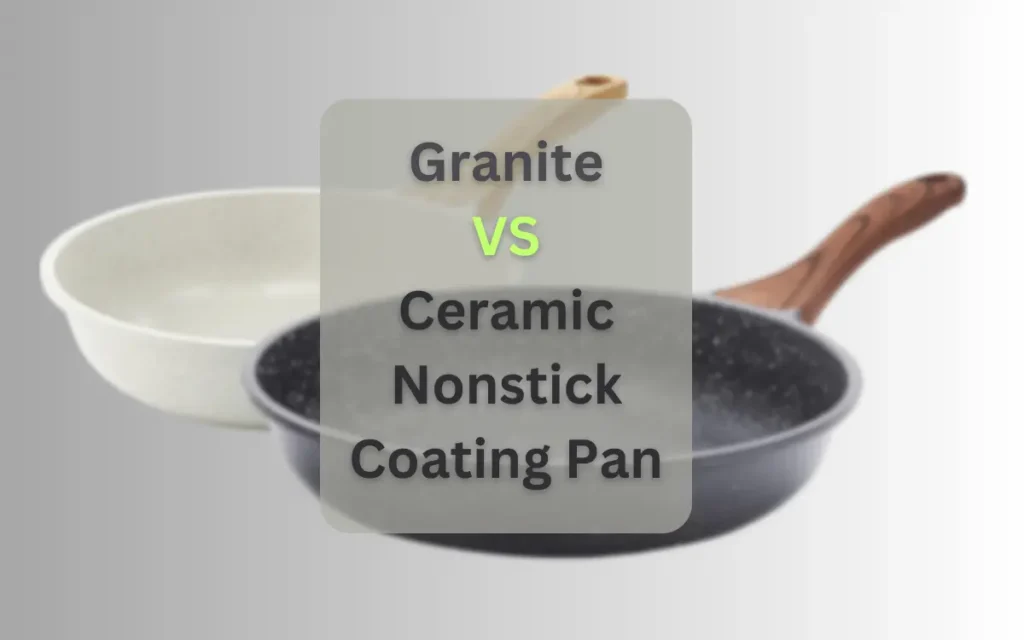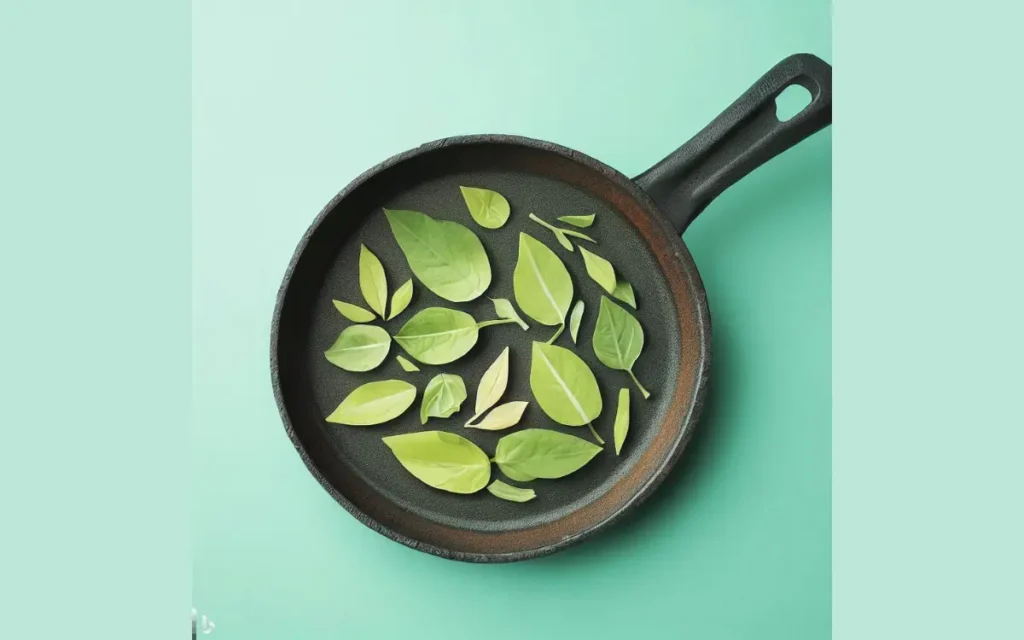
Introduction
The world of cookware is always evolving. Culinary enthusiasts and home chefs need to understand their cookware’s surfaces.
For many years, the search has been on for the ideal nonstick pan. We want a pan that offers easy cooking. We also want it to last long and be safe.
Now, let’s talk about two top contenders: Granitium nonstick coating vs ceramic. These coatings are becoming popular. Each has its own unique features and benefits.
We’re about to compare these two. You’ll learn about their origins, features, and advantages. Why are we doing this? To give you a clear idea.
We want to help you choose the right coating for your kitchen.
So, let’s explore the details of Granitium Nonstick Coating vs Ceramic.
Granitium Nonstick Coating VS Ceramic

1. Material Composition:
Granitium Nonstick Coating: This is a relatively newer nonstick coating.
It has a base of PTFE.
This is a common nonstick material. It also has bits of granite mixed in.
This mix gives it a speckled look. The granite also makes it more durable.
Ceramic Coating: This coating is derived from natural materials. It’s often considered a more eco-friendly nonstick alternative.
It is usually made from a mixture of sand, water, and oxygen, baked onto the pan.
2. Durability:
Granitium Nonstick Coating: It’s coating contains granite particles. Because of this, it’s more resistant to scratches and abrasions.
This coating also handles high cooking temperatures well.
It doesn’t degrade as fast as some traditional nonstick pans.
Ceramic Coating: It is hard when it’s new. It can resist scratches well at first. However, over time, its nonstick quality can diminish.
Granitium tends to keep its nonstick property longer. If ceramic is overheated, it loses its nonstick quality even quicker.
3. Heat Distribution:
Granitium Nonstick Coating: It often provides even heat distribution. The presence of granite particles can also assist in retaining heat.
Ceramic Coating: Known for its rapid heat distribution. It allows for quick cooking but may not retain heat as long as its Granitium counterpart.
4. Health and Safety:
Granitium Nonstick Coating: It is usually seen as safe.
It’s a PTFE-based coating.
Overheating it can be problematic. When too hot, it might release toxic fumes.
Ceramic Coating: it is known for not having PTFE or PFOA.
This makes it popular among people worried about toxins. If you use ceramic correctly, it’s considered safe.
There are no known health issues linked to it.
5. Maintenance and Care:
Granitium Nonstick Coating: It is tougher than many nonstick coatings. Still, it’s best to use non-metal utensils with it.
Also, it’s wise to avoid high heat. Both these steps can help it last longer.
Ceramic Coating: Requires gentle care to maintain its nonstick properties.
It is best to avoid metal utensils and abrasive cleaning tools.
6. Aesthetics:
Granitium Nonstick Coating: Often has a speckled appearance due to the granite particles.
This can be an attractive option for those looking for a unique look.
Ceramic Coating: It has a smooth and glossy finish. It comes in many colors. This gives cookware a modern look.
It also makes it look sleek.
7. Eco-friendliness:

Granitium Nonstick Coating: It combines PTFE and granite. Producing PTFE was problematic in the past.
The main issue was the use of PFOA, a specific chemical. Many new PTFE coatings don’t use PFOA now.
But their production still has some environmental issues. Also, getting and processing granite for the coating affects the environment.
Ceramic Coating: It is made from natural stuff like sand, water, and oxygen.
It doesn’t use man-made materials like PTFE.
This makes it a greener choice for base materials. The making of ceramic coatings is generally cleaner. It’s different from how traditional nonstick coatings are made.
Another point is ceramic coatings are safe when they get very hot. They don’t release bad fumes, making them more eco-friendly.
Which One is Best? To The Point Answer

Ceramic coating is generally considered more eco-friendly than Granitium nonstick coating.
Bottom Line
So, what do we conclude? If you’re looking for durability, Granitium is for you. But if eco-friendliness is your goal, choose Ceramic. It’s all up to you. Your decision will be based on your cooking priorities.
After learning about both Granitium and Ceramic coatings, which one aligns more with your cooking and environmental priorities?
Do you lean towards the robustness of Granitium or the eco-friendly nature of Ceramic? Share your thoughts!
FAQs
Ceramic coatings come mainly from natural elements. These are sand, water, and oxygen. They aren’t based on synthetic chemicals like PTFE. This makes them different from many common nonstick coatings.
Ceramic is seen as the greener choice. It’s because of its natural base and lack of harmful chemicals. But remember, you should also think about how each is made and how long they last.
Granitium has granite particles in it. This makes it resist scratches more. It might last longer if you take good care of it. But the actual lifespan changes based on how you use and look after it.
If Ceramic pans get too hot, they usually don’t give off bad fumes. Granitium is generally safe too. But if it gets super-hot, it might release harmful fumes, mainly if it has PTFE.
For both types, you should use utensils that aren’t metal. This stops them from getting scratched. Also, don’t use very high heat. To clean, use a gentle sponge and not-too-strong soap. This helps keep them nonstick.
Using metal tools isn’t a good idea for either Granitium or Ceramic. It can harm them and make them wear out faster.
Both have good points. If you’re cooking a lot, you might like Granitium because it’s tough. But if you care a lot about the environment, Ceramic might be your pick.






